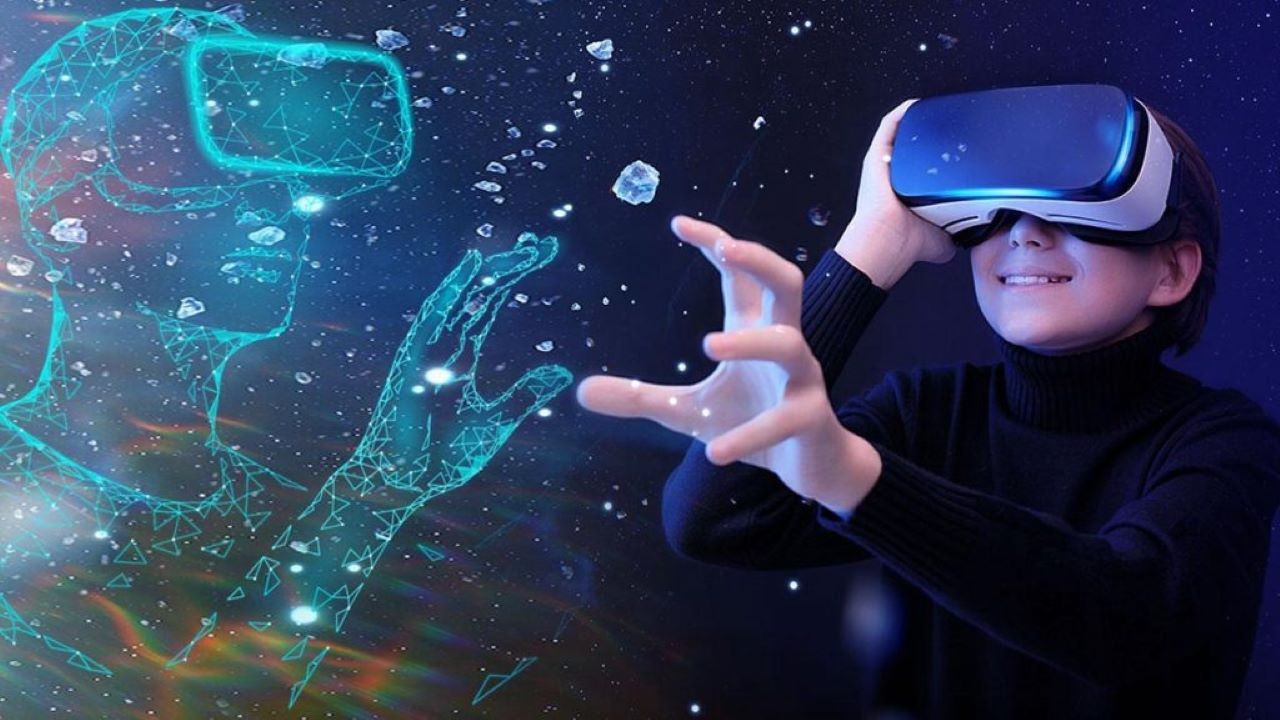
A Comprehensive Guide:
Augmented reality (AR) and virtual reality (VR) are two rapidly developing technologies that have the potential to revolutionize the way we interact with the world around us. While both technologies share some similarities, they are fundamentally different in terms of their purpose and implementation.
Augmented Reality (AR):
AR enhances the real world by overlaying digital information and virtual objects onto it. This can be achieved through the use of smartphones, tablets, or specialized AR glasses. AR allows users to interact with digital content in a way that is contextually relevant to their surroundings. For example, an AR app could provide users with directions to a nearby location or display information about a historical landmark.

Virtual Reality (VR):
VR, on the other hand, creates a completely immersive and simulated environment that replaces the user’s real-world surroundings. VR is typically experienced through the use of a VR headset that blocks out the user’s vision and replaces it with a virtual world. VR allows users to fully immerse themselves in a virtual experience, such as a game or a training simulation.

Comparison:
The main difference between AR and VR lies in the way they present digital content to the user. AR enhances the real world, while VR replaces it. AR is more focused on providing users with information and assistance in the real world, while VR is more focused on creating immersive and entertaining experiences.
In terms of hardware, AR devices are typically more portable and accessible than VR devices. AR glasses or smartphones can be used to experience AR, while VR requires a dedicated VR headset.
Applications:
AR and VR have a wide range of applications across various industries. AR is commonly used in fields such as education, healthcare, manufacturing, and retail. VR is primarily used in gaming, entertainment, training, and simulation.
Conclusion:
AR and VR are both powerful technologies with the potential to transform our lives. While they share some similarities, they are fundamentally different in terms of their purpose and implementation. AR enhances the real world, while VR creates a completely immersive virtual environment. Both technologies have a wide range of applications across various industries and are expected to play an increasingly important role in our future.
Augmented Reality (AR) and Virtual Reality (VR) are indeed transformative technologies, each with its unique capabilities and applications. Let’s explore further:
1. Immersion Level:
- AR: Augments the real world with digital information and objects, blending virtual elements with the user’s environment. This creates a semi-immersive experience where users remain aware of their surroundings. For example, an AR app could provide users with directions to a nearby location or display information about a historical landmark.
- VR: Creates a completely immersive and simulated environment that replaces the user’s real-world surroundings. VR is typically experienced through the use of a VR headset that blocks out the user’s vision and replaces it with a virtual world. VR allows users to fully immerse themselves in a virtual experience, such as a game or a training simulation.
2. Interaction:
- AR: Allows users to interact with both real and virtual elements simultaneously. Users can engage with digital content overlaid onto physical objects or environments.
- VR: Interaction is typically limited to virtual objects within the simulated environment. Users can manipulate objects and navigate the virtual space using motion controllers or other input devices.
3. Hardware Requirements:
- AR: Devices such as smartphones, tablets, and AR glasses are commonly used to experience AR. These devices are often lightweight, portable, and accessible to a wide range of users.
- VR: Requires dedicated VR headsets that are equipped with motion tracking sensors and high-resolution displays. VR headsets vary in complexity, from standalone devices to tethered systems that require a powerful computer.
4. Applications:
- AR: Widely used across industries such as education, healthcare, retail, and manufacturing. Examples include AR-enhanced maintenance procedures, virtual furniture placement in home décor apps, and educational simulations.
- VR: Primarily utilized in gaming, entertainment, training, and simulation scenarios. VR applications range from immersive gaming experiences to virtual training simulations for industries like aviation and healthcare.
5. Social Interaction:
- AR: Allows for social interaction within the real world, as users can share augmented experiences with others in their physical vicinity.
- VR: Facilitates social interaction in virtual environments, enabling users to meet, communicate, and collaborate with others in simulated spaces, often regardless of physical distance.

6. Accessibility and Adoption:
- AR: Generally more accessible due to the widespread availability of AR-capable devices such as smartphones. AR experiences can be easily accessed by a broad user base.
- VR: Adoption may be hindered by the cost and complexity of VR hardware, as well as potential concerns regarding motion sickness and discomfort among certain users.
Breakdown of the pros and cons of Augmented Reality (AR) and Virtual Reality (VR):
Augmented Reality (AR):
Pros:
- Enhanced Real-world Experience: AR overlays digital information onto the real world, providing users with contextually relevant and interactive content.
- Increased Engagement: AR applications can enhance user engagement by providing interactive and immersive experiences that blend digital and physical elements.
- Practical Applications: AR has practical applications across various industries, including education, healthcare, retail, and manufacturing, improving processes and enhancing user experiences.
- Accessibility: AR experiences can be accessed using commonly available devices such as smartphones and tablets, making the technology more accessible to a wide range of users.
- Social Interaction: AR allows for social interaction within the real world, enabling users to share augmented experiences with others in their physical vicinity.
Cons:
- Limited Immersion: AR offers a semi-immersive experience, as users remain aware of their physical surroundings. This may limit the depth of immersion compared to VR.
- Technical Challenges: AR experiences may be impacted by factors such as environmental conditions, device limitations, and accuracy of tracking, leading to potential technical challenges.
- Content Creation Complexity: Developing high-quality AR content can be complex and resource-intensive, requiring expertise in areas such as 3D modeling, computer vision, and app development.
- Dependency on Hardware: While AR can be experienced on smartphones and tablets, more advanced AR functionalities may require specialized hardware such as AR glasses, which may not be widely accessible or affordable.
- Privacy Concerns: AR applications that utilize location-based or personal data may raise privacy concerns regarding data collection, tracking, and potential misuse of information.
Virtual Reality (VR):
Pros:
- Complete Immersion: VR provides users with a fully immersive experience, transporting them to virtual environments where they can interact with digital objects and surroundings.
- Enhanced Training and Simulation: VR is widely used for training simulations in industries such as aviation, healthcare, and manufacturing, providing realistic and risk-free environments for skill development.
- Entertainment and Gaming: VR offers immersive gaming experiences, enabling players to fully engage with virtual worlds and characters, leading to heightened entertainment value.
- Therapeutic Applications: VR is being explored for therapeutic purposes, including pain management, exposure therapy for phobias, and rehabilitation exercises, leveraging its immersive nature to enhance treatment outcomes.
- Collaborative Experiences: VR enables collaborative experiences in virtual environments, allowing users to interact and collaborate with others regardless of physical distance, fostering teamwork and communication.
Cons:
- Cost of Hardware: VR hardware, including headsets and motion controllers, can be costly, limiting accessibility for some users.
- Motion Sickness: Some users may experience motion sickness or discomfort when using VR, particularly during activities involving rapid movement or virtual locomotion.
- Isolation: VR experiences can be isolating, as users are fully immersed in virtual environments and may feel disconnected from their physical surroundings and others.
- Technical Requirements: VR experiences may require powerful hardware, such as gaming PCs or gaming consoles, to run smoothly, leading to additional costs and technical complexity.
- Content Limitations: While VR offers immersive experiences, the availability of high-quality content may be limited compared to other forms of media, potentially impacting long-term engagement.
In summary:
While AR and VR share some common ground in their ability to create digital experiences, they offer distinct approaches to immersion, interaction, and application. Both technologies continue to evolve rapidly, opening up new possibilities across various industries and reshaping the way we perceive and interact with the world around us.
Overall, both AR and VR offer unique strengths and limitations, and the choice between the two technologies depends on factors such as the desired level of immersion, intended use case, available resources, and target audience.








